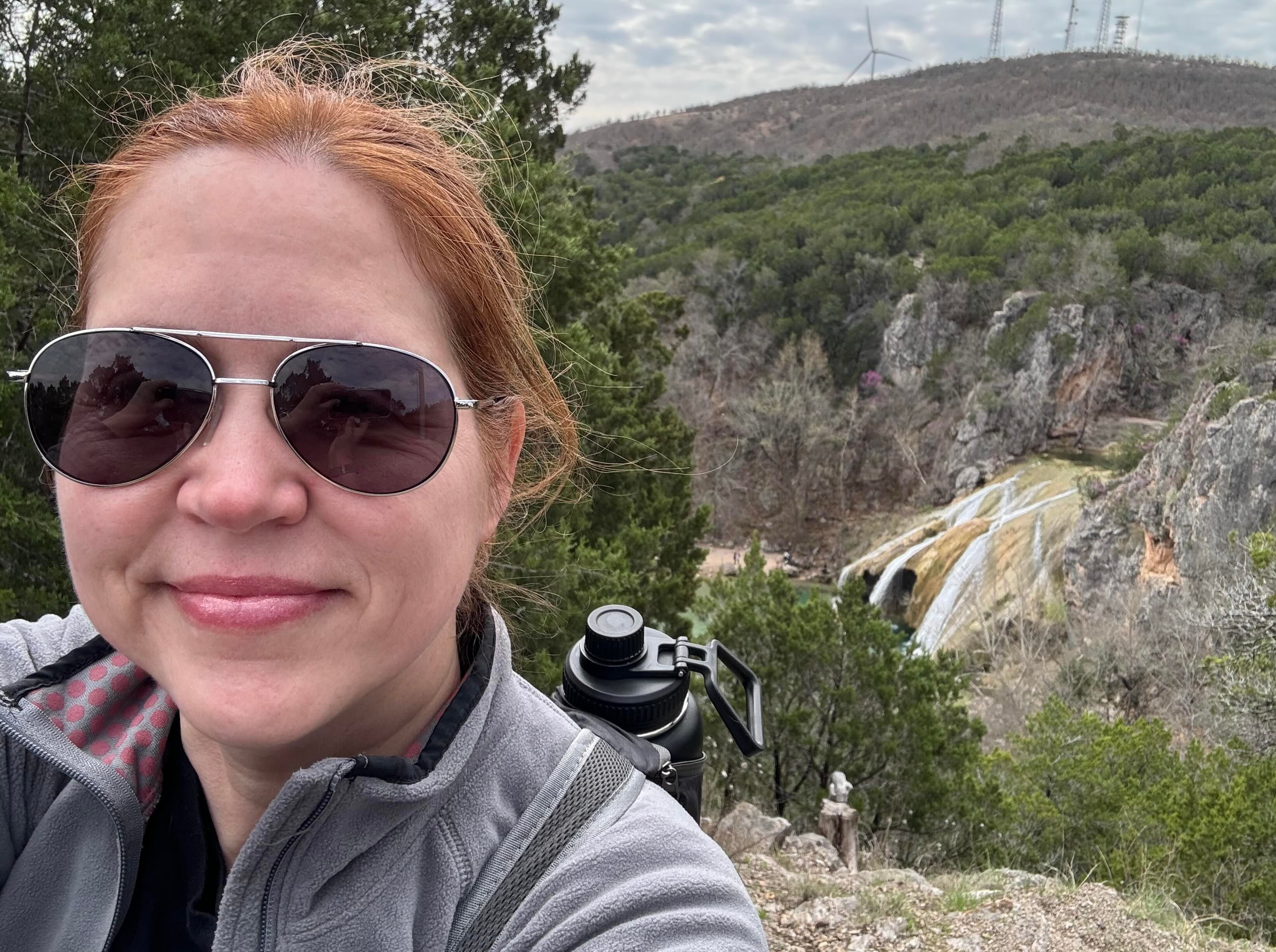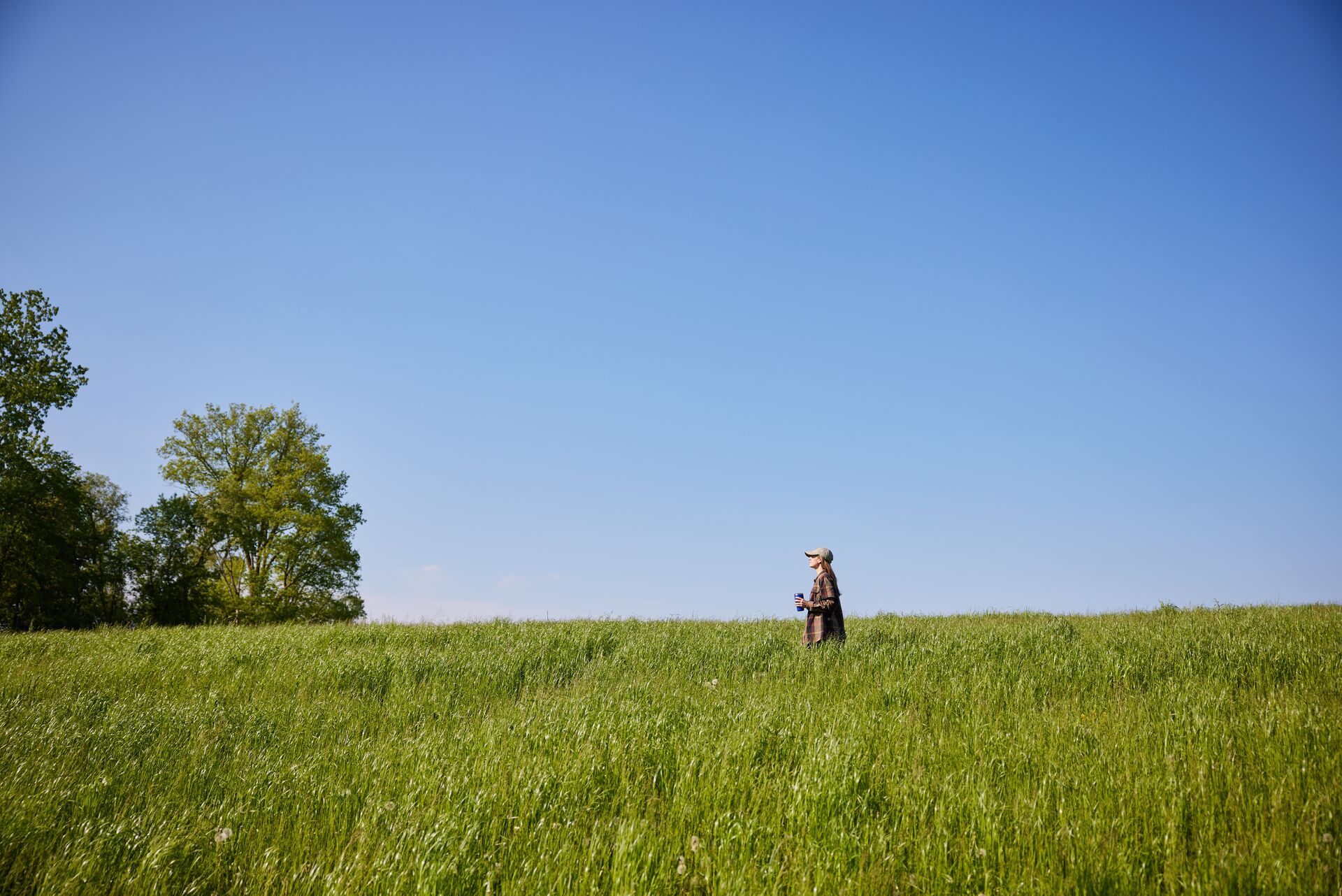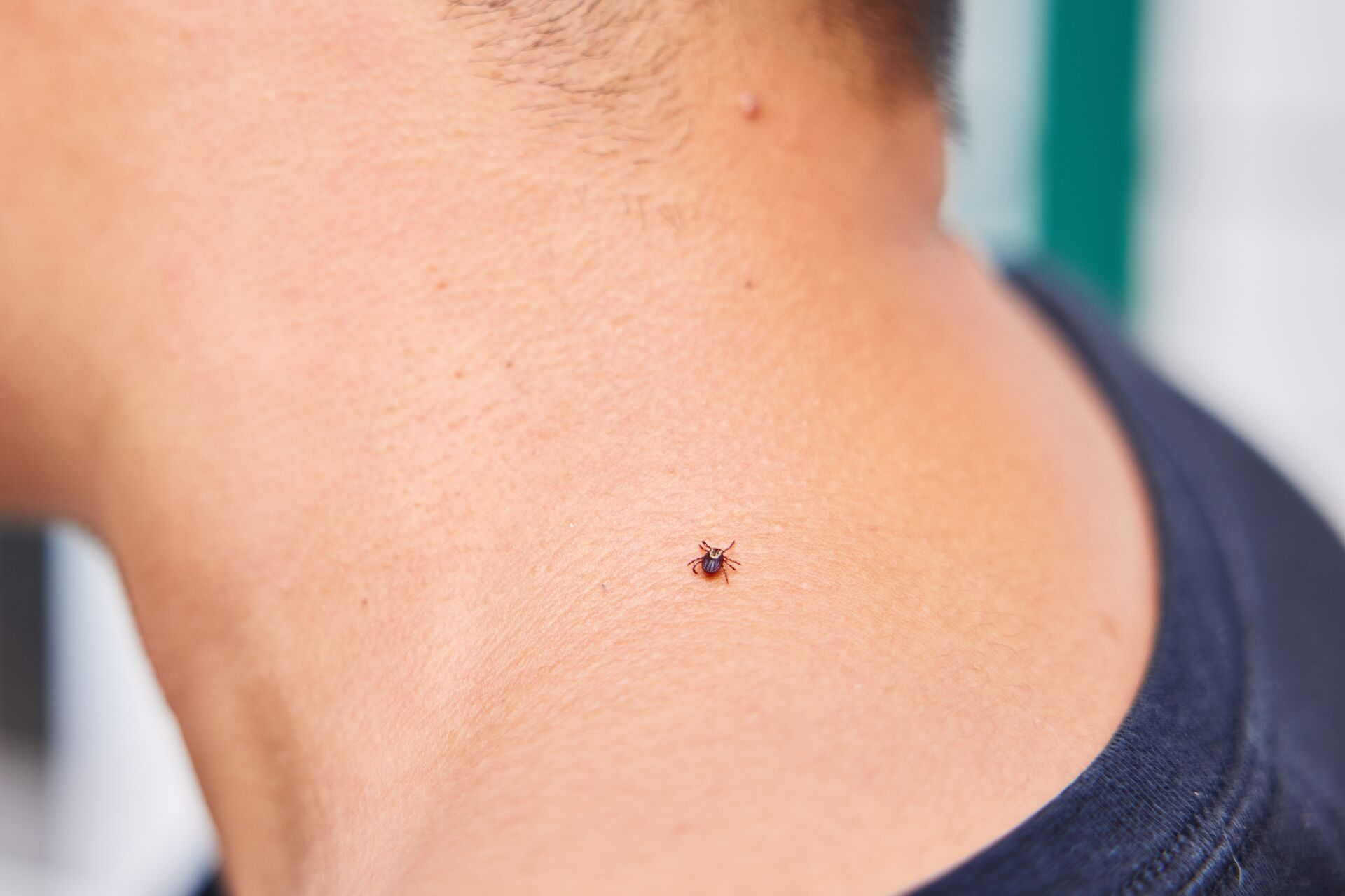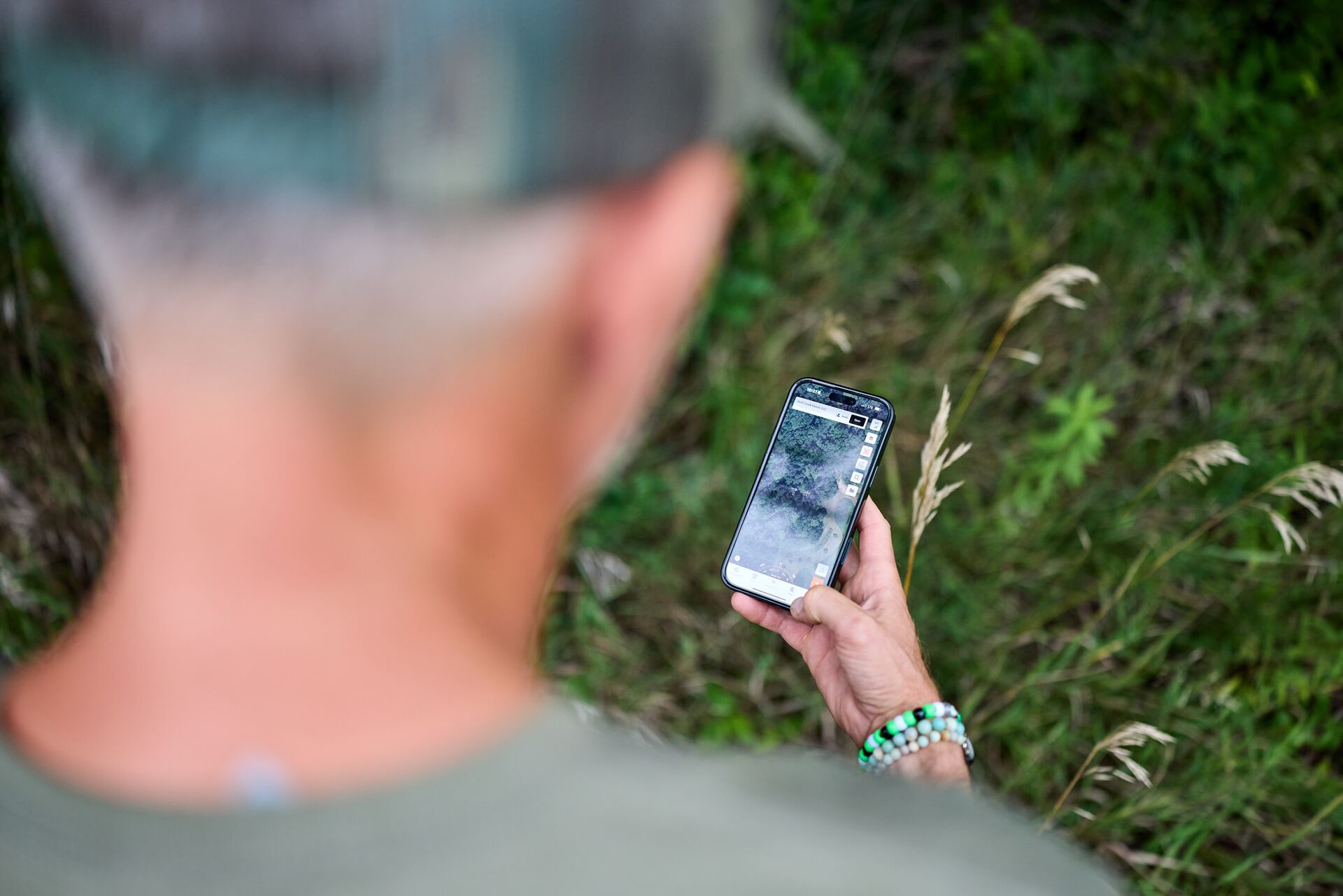Field Guide / Hunting Tips
Why You Should Coyote Hunt (and How to Get Started)

17 Minute Read
When deer disappear, coyotes are often the culprit. They eat fawns, small game, livestock, and even our pets. Coyotes are one of the most adaptable animals in the world. Their excellent vision, sense of smell, and hearing, matched with their ability to survive by eating just about anything, make them irrepressible predators.
Once limited to the Great Plains of North America, you can now find coyotes throughout the entire continental United States. Since the 1950s, the coyote population and geographic expansion have been due to the loss of natural predators like wolves and cougars decimated by ranchers to protect their livestock and families.
Should hunters hunt coyote? It's a worthwhile question to ask. Today, we'll help you learn about coyotes, why you should consider coyote hunting, and how to do it successfully with the right tools and approach.
What Hunters Should Know About Coyotes
Coyotes vary in size and color, depending on where they are throughout the U.S.
Western coyotes are slightly smaller than Eastern coyotes seen throughout the Midwest. The larger size of the Eastern Coyote results from decades of breeding with Great Lake wolves, making them bigger, faster, and hungrier, typically weighing anywhere from 20-55 pounds.
Today, there are 19 recognized coyotes subspecies, all rapidly growing and expanding their territories.
They Eat Almost Anything
Coyotes will eat whenever there is an opportunity but need to average about 2-3 pounds of food per day, with 90% of their diet being mammalian. These animals are omnivores, which means they will eat everything from dog food and insects to rabbits and full-grown deer.
Overpopulation of coyotes means less food in an area. For most animals, their population caps when there is a food shortage. However, coyotes will travel up to 100 miles to find their next meal and can adapt to new habitats.
They Are Elusive
These animals are very elusive, hunting and traveling solo or with their mate or pups. Part of their elusiveness is due to their nocturnal nature, especially in urban areas like Los Angeles, CA.
Yes, when we say they can live anywhere, we mean it. Coyotes are now prevalent everywhere, from cities in Central America up to the northern reaches of Maine.
5 Reasons Why You Should Hunt Coyotes
For many hunters, coyote hunting is not something their fathers and grandfathers did. Most hunters didn't learn tips from hunting mentors.
Coyote hunting has become an "acquired" skill and often a necessity to help control a predator population and ensure hunting other species can continue.
Now that coyotes are present in all 49 states of the continental U.S., it's likely that coyotes have moved into your area. Whether you are a hunter who has shot countless coyotes or looking to learn the ropes of coyote hunting, next, we'll talk about why you should hunt coyotes and share strategies to help you succeed.
1. Manage the Coyote Population
Coyotes are predators with little to no competition. Without serious effort, their population grows substantially every year.
Most animals cannot continue to live if their food source is depleted. However, coyotes adapt and then reproduce.
These animals are resourceful and migrate to new locations with new food sources. They will eat pretty much anything from trash to cat food to full-grown deer and continue to reproduce.
In an area overpopulated with coyotes, a litter may only consist of as few as four pups. In contrast, if an area has little to no other coyotes, a female coyote can give birth to up to 12 coyotes in a litter.
The average lifespan of a wild coyote is ten years, and they are ready to mate at 20 months. That means a female coyote can potentially give birth to more than 120 coyotes in her lifetime, which, left unchecked, can lead to exponential growth of the coyote population in an area. This trend makes hunters and trappers critical to keeping the coyote population in check, or coyotes will continue to find new things to eat, keep expanding their territory, and keep reproducing.
2. Help Deer and Small Game Populations Through Coyote Management
Coyotes usually breed from January through March, with a gestation period of around 60 days. As babies are born in the spring, male coyotes will hunt and return with game for the female coyote and her pups.
What else is being born in late spring all across North America? You got it: whitetail, mule deer fawns, and elk calves.
Coyotes are a significant contributor to the annual white-tailed deer fawn mortality in North America. Since fawns aren't as strong, fast, and tough as mature deer, they are a perfect target for coyotes to bring back to their families or a first hunt for a coyote pup. The average whitetail fawn weighs 6-8 pounds, the perfect size for a coyote family meal compared to other smaller game.
Coyotes generally eat animals smaller than them. However, when those food sources are more scarce in the winter, they are likely to go after fully grown big game animals like deer, elk, and moose. By hunting coyotes, hunters help reduce the coyote's impact on lowering populations of deer and other big game.
3. Coyotes Spread Disease
Coyotes contract various diseases and then spread them when they roam or come in contact with other animal species.
Canine hepatitis and canine distemper are among the most prevalent diseases found in coyotes. Domestic dogs have a high mortality rate when inhaling canine distemper. Additionally, coyotes can transmit rabies and tularemia to humans and other animals.
Coyotes often carry parasites, which include mites, ticks, fleas, worms, and flukes that can turn into flesh-eating mange. In the video below, we talked to Bobby Mills, a retired game warden with more than two decades of experience in the law enforcement division of the Michigan DNR, acting as a Senior Detective. He is also an avid predator hunter.
He explained, "Tuberculosis is contracted through coyotes feeding on infected animals, like bears and raccoons, and they contact other species."
Mills also speculates that "In NE Michigan especially, CWD (chronic wasting disease) is potentially spread through feces and urine."
Bovine Tuberculosis is an epidemic in whitetail deer. Since male coyotes travel up to 100 miles searching for food and can carry many diseases, managing and quarantining infected coyotes can be challenging.
Therefore, hunting coyote becomes an effective means of controlling the population and protecting deer and domestic animals from diseases spread by these predatory animals.
4. Hone Your Hunting Skills in the Off-season
Coyote hunting makes you a better overall hunter because you must be aware of every aspect of the hunt to hunt coyotes successfully. From the best camo to wear to the movements and sounds you make, hunting coyotes forces you to become a part of wildlife and the top predator.
Additionally, coyotes are fast learners, adapt quickly, and have great eyesight and an impeccable sense of smell. Your hunt is ruined if they pick up your scent or identify your call as fake. They recognize you as a threat and adapt to avoid your hunting strategy. These skills make them one of the smartest, most challenging animals to hunt.
The hunting experts here at HuntWise understand coyotes are especially cautious of their surroundings, challenging us to hunt smarter. You must outsmart their excellent senses by camouflaging yourself, making the right call, and staying downwind so they don't smell you.
If you can master these skills, you'll get close enough to get a successful shot at this small, quick predator. Then, if you've sharpened your skills with a successful coyote hunt, you're ready to hunt deer, turkey, and just about any other wild game.
5. Keep Hunting Year Round
In many states, coyotes can be hunted year-round. For example, since April 2016, Michigan opened its coyote season to 365 days a year, with no kill limit. Texas also allows coyote hunting year-round. Hunting access to non-game animals creates more opportunities for hunters to get out in the field.
About hunting coyotes, Bobby Mills says, "The key reason, for me, is extending my hunting opportunity. Coyote hunting keeps me out and helps alleviate the postseason (deer hunting season) blues. Ice fishing didn't cut it for me – so I started hunting coyotes with a centerfire rifle, allowing me to get out and be active while having a positive impact on my hunting as a whole."
Coyote hunting is a great way to stay outdoors and active during the "off-season." You become more familiar with the area by walking and getting to know the terrain better.
While you're out after coyotes, you can also scout for other wild game, like turkeys. Then, when spring turkey season begins, or even deer season, you will be better prepared.
Critical Strategies for Hunting Coyotes
Whether you are hunting coyotes who have never experienced hunting pressure from humans or coyotes who know exactly what to smell, look, and listen for, predator hunting requires a sound strategy to locate, hunt, and successfully shoot coyotes.
In addition to using your HuntWise app, apply the following strategies for a successful coyote hunt.
Scouting Coyotes
Coyotes inhabit many different terrains. However, they spend much of their time hunting in open areas instead of hardwoods.
When you e-scout, look for fields, swamps, creek beds, and easements you can use to get in undetected. HuntWise is the only hunting app showing phone numbers, landowner names, and private land boundaries. If you identify coyotes on a parcel of land, you can learn who owns it and gain their contact information in seconds through the app.
Contact the land owner and ask permission before entering their land. Farmers are usually aware of coyotes impacting their livestock and welcome help eradicating the issue.
Hunting public land is also a great way to get on coyotes. The HuntWise app also shows public land boundaries.
When scouting a property to hunt, identify any houses, barns, buildings, or other dwellings where people could be at least 450ft around the hunting area. Know the possible places your bullet could end up.
Shooting from an elevated location is a good way to shoot into the ground and avoid injuring someone with your shot. Safety is always paramount.
Find Coyotes On the Land You Found
Once you know the land you will hunt, how do you know coyotes are roaming this land? How do you locate them to get your shot?
Often, coyotes are so elusive we don't actually see them until we aim at them through a scope. That said, coyotes leave a lot of evidence of their presence.
Here's what to look for.
- An absence of foxes in the area is a sign coyotes are present. Foxes are a natural competitor of coyotes. Coyotes will eat foxes, but foxes don't eat coyotes.
- Look for tracks in the snow. Coyote tracks look just like dog tracks, so be aware of any possible dogs that could be in the area and the size of their tracks.
- A lack of rabbits and small game. If you are a small game hunter and notice a drastic decrease in rabbits, squirrels, and other small game, there is possibly a coyote wreaking havoc on their populations.
- Coyote sounds at night. Coyotes are among the most vocal animals in all of North America. Since they are most active at night, you can often hear them howling, yipping, or barking.
Additionally, put out trail cameras, just like deer or any other animal. You can often get a peek into coyote activity with trail cameras. Some hunters even put out old meat scraps to improve their chances of luring in a coyote to the camera.
An Essential Key to Finding Coyotes
We asked Bobby Mills about the key to finding coyotes. He told us to look for "field edges and woodlot edges, marsh, and CRP areas. Hunt around these areas to call them out of these areas to the fringes. Coyotes like to look over frozen surfaces during the breeding season, allowing them to see far and find a potential mate."
He also told us to keep an eye out for ravens and other predatory birds as this is typically indicative of a carcass, which makes for an easy meal for a coyote.
When observing evidence of a coyote in the field, pull up HuntWise and mark it on your map, as this is a great way to start understanding coyote patterns and developing your hunting play.
Play the Wind
Coyote's sense of smell is impeccable, so playing the wind is crucial.
Always stay downwind of a coyote. If they get a whiff of your scent, they will avoid you, or worse yet, may even leave the area entirely.
Scout before your hunt and plan according to wind conditions. Using HuntWise and the WindCast feature allows you to see aerial views of the land you are hunting and the wind's direction so you can plan your play accordingly.
Bobby Mills uses the wind to his advantage by using a crosswind setup. He says, "Setting the call upwind but hunting the crosswind – maybe on a lake – may allow you to get a shot without being picked off."
Calling Coyote
While calling to a smart predator like a coyote is exhilarating, overcalling or calling incorrectly creates "call shy" coyotes, making them weary of every noise after that.
When hunting coyotes, you can use electronic, diaphragm, prey distress reed, and coyote imitation calls. Many predator hunters have their favorites, but most use multiple calling styles. No matter the calls you prefer, learn how to use them well so coyotes don't become educated on the sound.
Seasoned predator hunters can expand their strategy by incorporating various electronic, diaphragm, and reed calls.
Electronic Calls
An electronic call makes the perfect imitation of animal noises. They come with a variety of sounds loaded on them and a speaker.
The more expensive electronic calls have more sounds, and many have the ability for hunters to load more sounds onto them. An advantage to using electronic calls is placing them on decoys or just upwind of where a coyote is headed, as coyotes often hunt their game downwind.
If you are new to predator hunting, electronic calls are a sure way to trick coyotes with more realistic, consistent call sounds.
Diaphragm Calls
Diaphragm calls are great to use when you are on the move. Use them to mimic prey distress calls or coyote howls, barks, and growls.
Many hunters use diaphragm calls instead of others for a more dynamic hunting setup. However, a primary concern with diaphragm calling is that coyotes can identify a calling error and never come to the sound again if you are not good at using the call.
This creates "call shy" coyotes. To take your hunt to the next level with diaphragm calls, do your homework and practice.
Utilize YouTube channels and instructional resources like this video from Al Morris, demonstrating the basics of using a diaphragm call.
Prey Distress Calls
A distress call is like saying to a coyote, "Supper is ready; come and get it" because the sound mimics an animal in distress. It could be the sound of a bird caught in a fence or a rabbit caught by another coyote.
Animals make various sounds when distressed, which means your calls need to reflect reality. Do some research to find calls to mimic various distressed animals, from rabbits to rodents, birds, cats, and even fawns.
How to Effectively Call in Coyotes
Coyotes are most vocal during their mating season. So, coyote calls are most used by predator hunters during winter months.
Making the sound of a coyote can signal many things, and they are vocal all year round. Coyotes are territorial, so it challenges a coyote's territorial instinct when you call like a coyote. Coyotes will also not pass up the opportunity to get a free meal.
However, pup distress calls only work when pups are present. They are born in April and May. So, using a pup distress call in January will only raise a red flag for coyotes in the area. Practice your calls so you mimic a real scenario.
Tempt Coyotes with Prey
Set the scene to make the situation as realistic as possible. Often, this means using a variety of sounds.
You can call the coyote to you, to an electronic call, or to a decoy. A common technique is to tease a coyote with the opportunity for a free meal (i.e., prey). Start with coyote howls, wait a few minutes, then bring in the distress sounds.
Once coyotes become educated about a particular type of call pattern, you may need to change your strategy. The advantage of using an electronic call is that it calls away from your scent, which allows you to be more strategic with your placement in correlation to your call.
Challenge a Coyote's Dominance or Territory
During the breeding season (January-March), focus on howls and coyote calls rather than distress calls.
Coyotes mate for life and practice monogamy; they will stick together and look out for one another. A male coyote will go after food for their female companion in breeding months. So, a good strategy is to threaten their territory.
If you can call in a pair of coyotes, try to shoot the female first, as this will give you a better chance of stopping the male with a pup distress call and improve your chance of doubling up.
Remember: different coyote vocalizations mean different things. Learn the meanings of the growl, huff, woof, bark, bark-howl, whine, yelp, woo-oo-wow, lone howl, and group howl, and use them effectively.
Hunting Coyotes with Decoys
Decoys are an excellent way to convince curious coyotes to commit to investigating your calls.
You can use decoys of coyotes or small game animals like rabbits. Decoys are especially effective as they connect the sound of your call with the animal, proving the sound they heard is real.
Call for 10-20 minutes, then wait with your senses on high alert. Coyotes will most likely remain hidden for a while, searching for what is making the sound.
If you are hunting with an electronic call, place your call next to your decoy and get out of the way. Position yourself 50-75 yards away with good visibility to take your shot.
Guns and Gear for Coyote Hunting
One of the most fun aspects of hunting coyotes is that you can use almost any weapon to shoot them, from traditional bows to AR15s. However, coyote hunting laws vary not only by state but even by county.
Before you head out to hunt, make sure you check your local laws on what kind of guns are legal to use and limits on time of day and year. Some states allow coyote hunting 24 hours a day, 365 days a year, with no limit on firearms or accessories like night vision scopes. Others have strict guidelines.
Many hunters use an array of firearms. However, keep the type of shooting you'll do in mind when selecting your weapon for a hunt.
Remember: coyotes like open terrain, so you will likely take shots from far away. Your deer rifle will do the job just fine, but if you plan to purchase a gun for coyotes, look for a flat-shooting .223 caliber rifle.
When Is the Best Time to Coyote Hunt?
Most people enjoy hunting coyotes in the winter months for many reasons.
For one, a coyote's fur is the thickest to keep them warm in cold temperatures. This makes their coat in prime condition for selling as fur or decoration in your home.
Additionally, in winter months, coyote food sources become limited as insects and rodents are unavailable. This causes coyotes to become more active during the day and more desperate and responsive to the prospect of free meals (i.e., your calls and decoys).
Coyotes are still the most active from dusk until dawn. Some states allow night hunting, which makes for an exciting, unique hunting experience.
Use HuntWise for Coyote Hunting Success
We hope this guide to coyote hunting has been helpful! Coyote hunting challenges your hunting ability, keeps you hunting during the off-season, and helps protect the other wildlife in your area.
Take the guessing game out of when coyotes will be most active on the days you plan to hunt! With the help of the HuntWise app and our HuntCast™ feature, you can predict peak movement times for coyotes in your hunting area.
Download the app and try it for free! You don't want to miss out on your best chance to get your shot at a coyote.
Content updated January 31, 2024.
Previous in Hunting Tips
Next in Hunting Tips
Try HuntWise For Free
Start your risk-free 7-day trial now!
More Content Like This

How to Find Private Hunting Land Near Me: A Guide
The success of your hunting season could depend on the land you plan to hunt. Whether it's public or private land, you need a spot you can scout and learn about, then delivers on that big buck or turkey you want to bring home by the end of your time ...Read More
Read More
Pre-Season Prep: Ticks and Permethrin Treated Clothing
Very few things will move a hunter out of their stand, blind, or from the woods when they're locked into a hunt with their eye on a big buck or scouting — but that small pest known as the tick can boot even the most dedicated hunter from his spot and...Read More
Read More
How to Use a Hunting Land App to Find Where to Hunt
Successful hunts are rarely the result of pure luck. More often than not, they are the payoff from hours spent preparing and planning long before opening day. Read More
Read More Hunting Tips
Hunting TipsHow to Find Private Hunting Land Near Me: A Guide
By Teri Williams | 07/04/2024The success of your hunting season could depend on the land you plan to hunt. Whether it's public or private land, you need a spot you can scout and learn about, then delivers on that big buck or turkey you want to bring home by the end of your time ...Read More
Read More Hunting Tips
Hunting TipsPre-Season Prep: Ticks and Permethrin Treated Clothing
By Teri Williams | 08/05/2024Very few things will move a hunter out of their stand, blind, or from the woods when they're locked into a hunt with their eye on a big buck or scouting — but that small pest known as the tick can boot even the most dedicated hunter from his spot and...Read More
Read More Hunting Tips
Hunting TipsHow to Use a Hunting Land App to Find Where to Hunt
By John Gay | 09/08/2025Successful hunts are rarely the result of pure luck. More often than not, they are the payoff from hours spent preparing and planning long before opening day. Read More
Read More
1 of 3